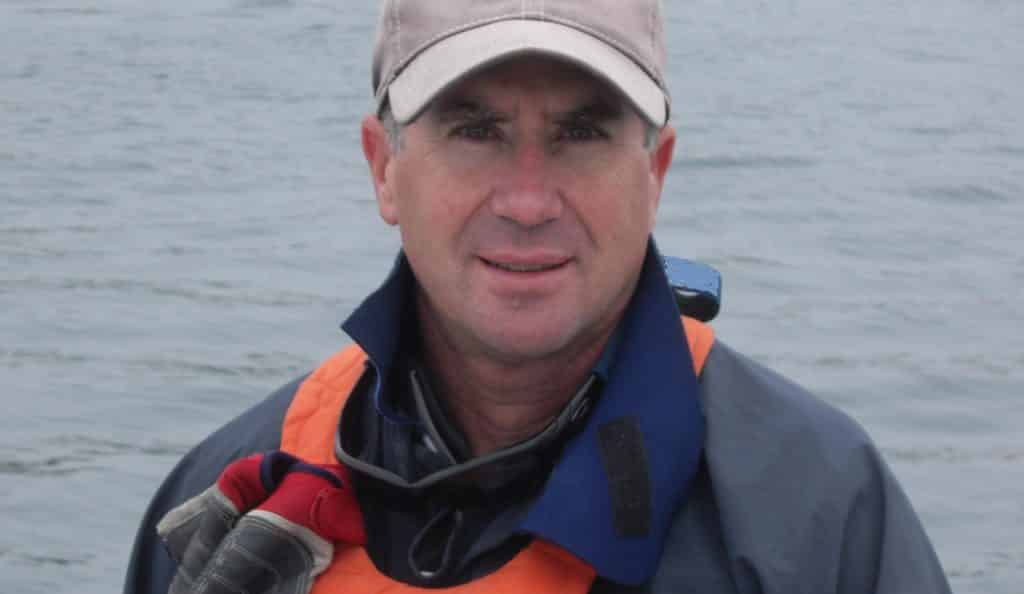Most small one-designs don’t have speedometers. Owners either don’t want the expense, or they feel the speedo takes away from the purity of sailing small boats. Instead, these boats rely on their “Human Speedo.” My human speedo is Quinn. Unlike his purchased counterpart, he doesn’t know our real speed or angle through the water. Instead, he compares our relative distance to a competitor. His readout is verbal, not digital:
Quinn: “We are fast and low, similar VMG.”
Me: “I will try a tighter main sheet.”
Mainsheet’s ratchet: “click, click, click”
Quinn: (after about 20 seconds) “Slower, equal height, losing VMG, let the main back out.”
Me: “Ok, easing.”
Quinn: “Try just heading a little higher without trimming in.”
Me: “Heading up a little.”
Quinn: (after about 20 seconds) “Faster, same height, we have better VMG.”
The first experiment didn’t work but the second did. Our goal is to try things thought out the race in 30-second cycles—20 seconds to determine if our experiment worked, and 10 seconds to regroup. Quinn is not really comparing speed, he is comparing distance, but we use the terms interchangeably because net gains and losses in distance are an accurate representation of speed. “Human Distance Comparer” doesn’t roll off the tongue.
Here is how Quinn does it:
• He compares our for/aft distance and how far we are apart with a boat nearby.
• Then after about 20 seconds he compares again.
• Since most boats sail about 45 degrees from the wind, distances in height and speed have roughly equal weight. For example, 1/2 faster and 1/2 boatlength lower translates into equal VMG 1/2 faster and same height = +1/2 VMG.
• He likes to line the pace boat with something up on our boat or he will anchor his hand on his leg. Anything he can find to make concrete distance comparison especially since the nearest boat is rarely in a convenient position.
• He needs to filter through and make judgment calls when the data is not perfect such as when the wind shifts or one boat hits a bad set of waves.
• The idea is to use these distances to get a baseline on our relative speed and height compared to our pace boat. Then when we make a change, he has something to compare to.
• The speed differences are relative, not absolute. Suppose we make a change and we went from VMG loss to less of a VMG loss. We consider our change successful because we are not as slow. We of course are not satisfied with being slower and will try something else, but this is our new baseline to experiment from.
Some drivers want their team telling them only good news because it keeps them in good spirits. I don’t like that; instead I want honest feedback so we can make productive changes. The human speedo needs to sort through all the information and just give the facts. I don’t need to hear all the details of how he arrived at that decision. I like information on speed first then height then VMG, all relative to us. Then it is awesome when he follows it with a suggestion. “Slower, equal height, losing VMG, let the main back out” is perfect communication.

Baseline
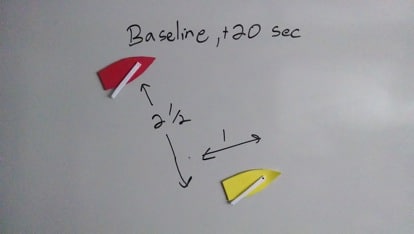
Baseline plus 20 seconds
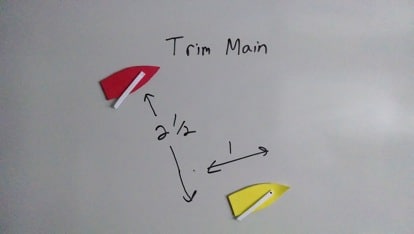
Trim mainsheet plus 20 seconds
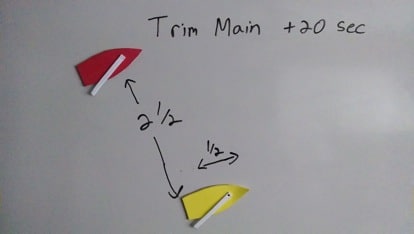
Trim mainsheet plus 20 seconds2
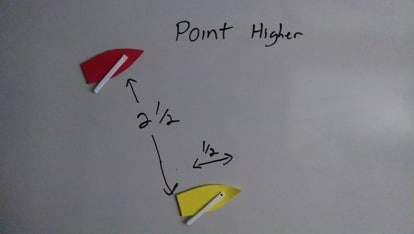
Trim higher, no mainsail trim
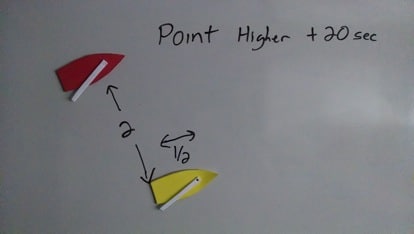
Point higher
